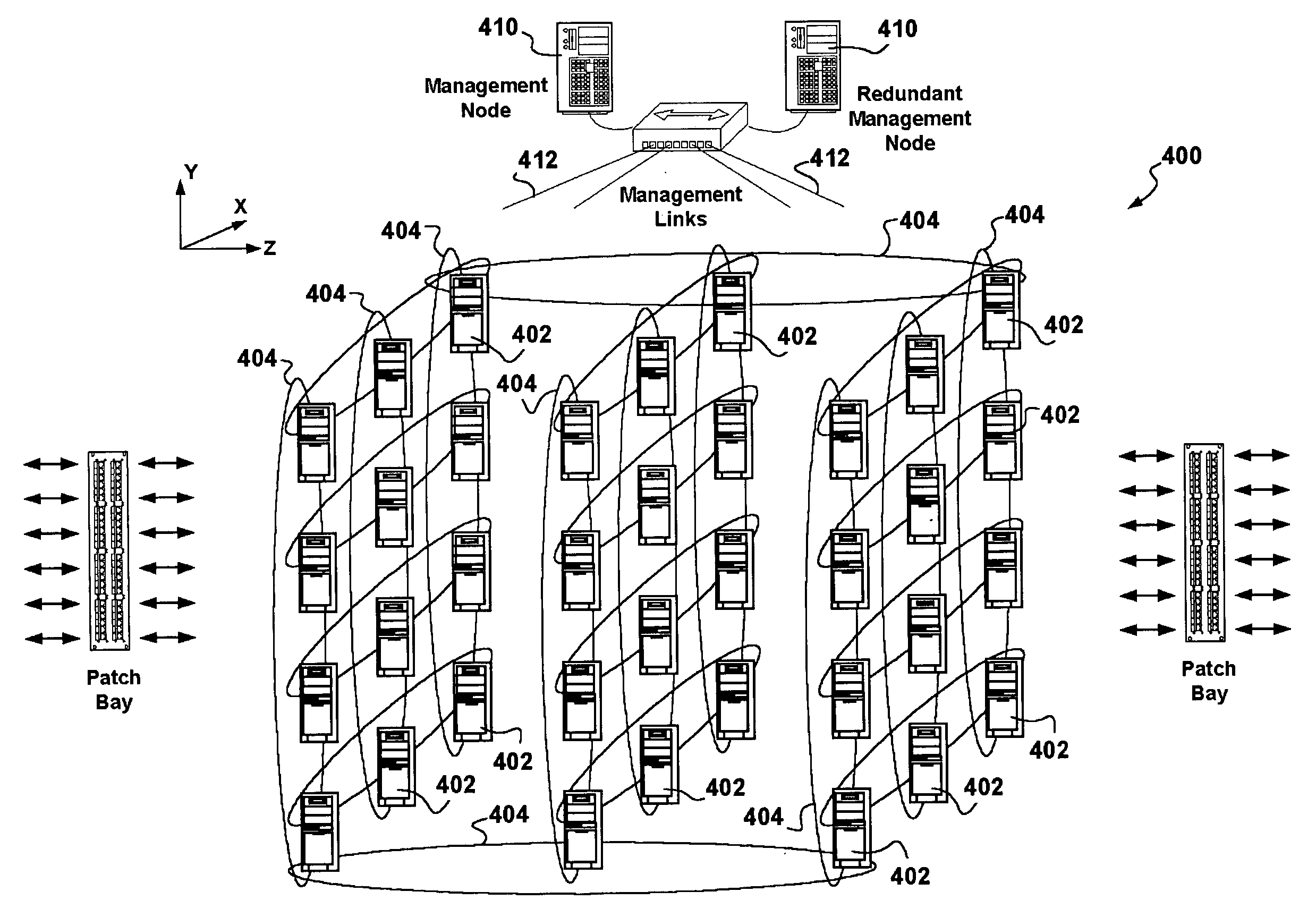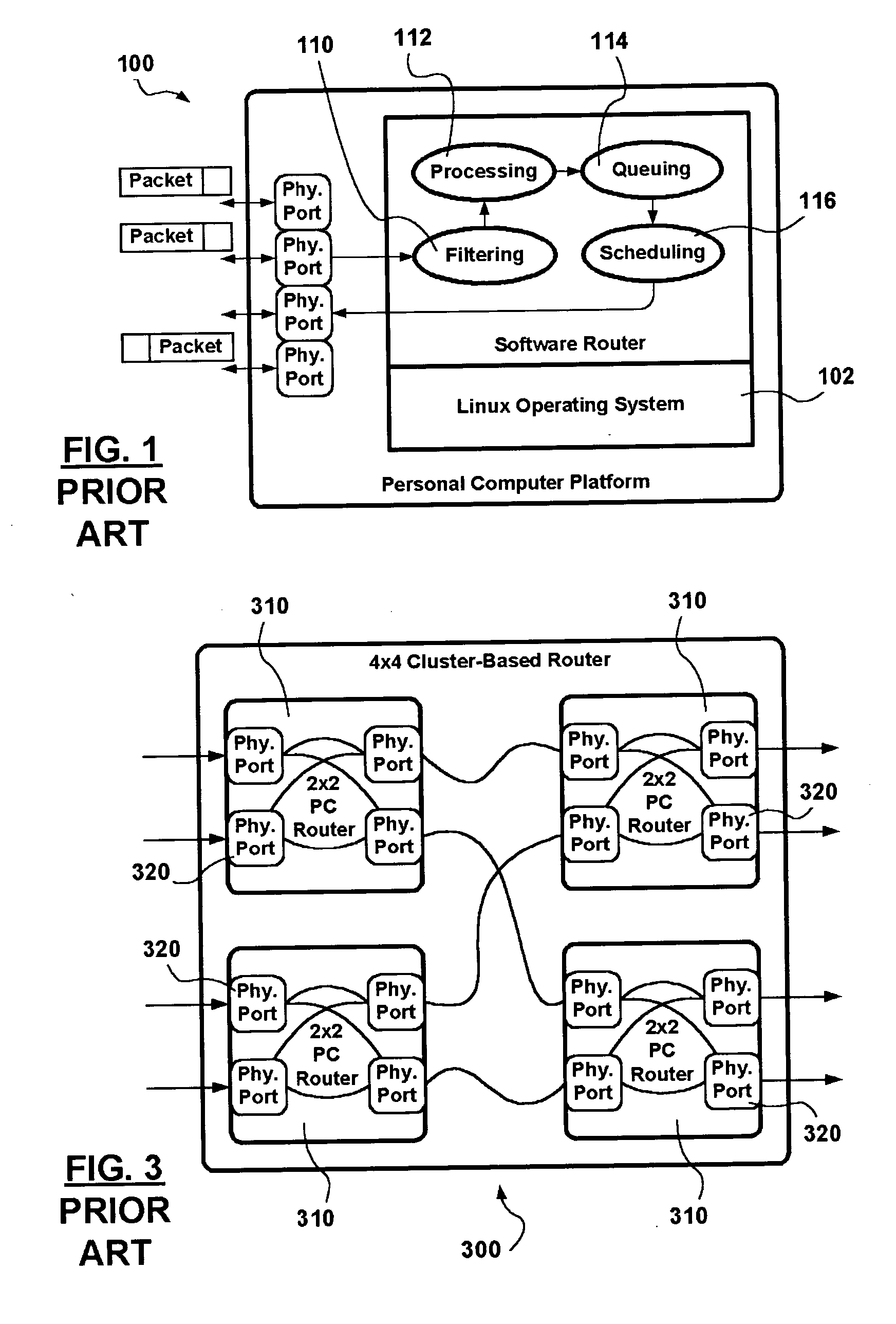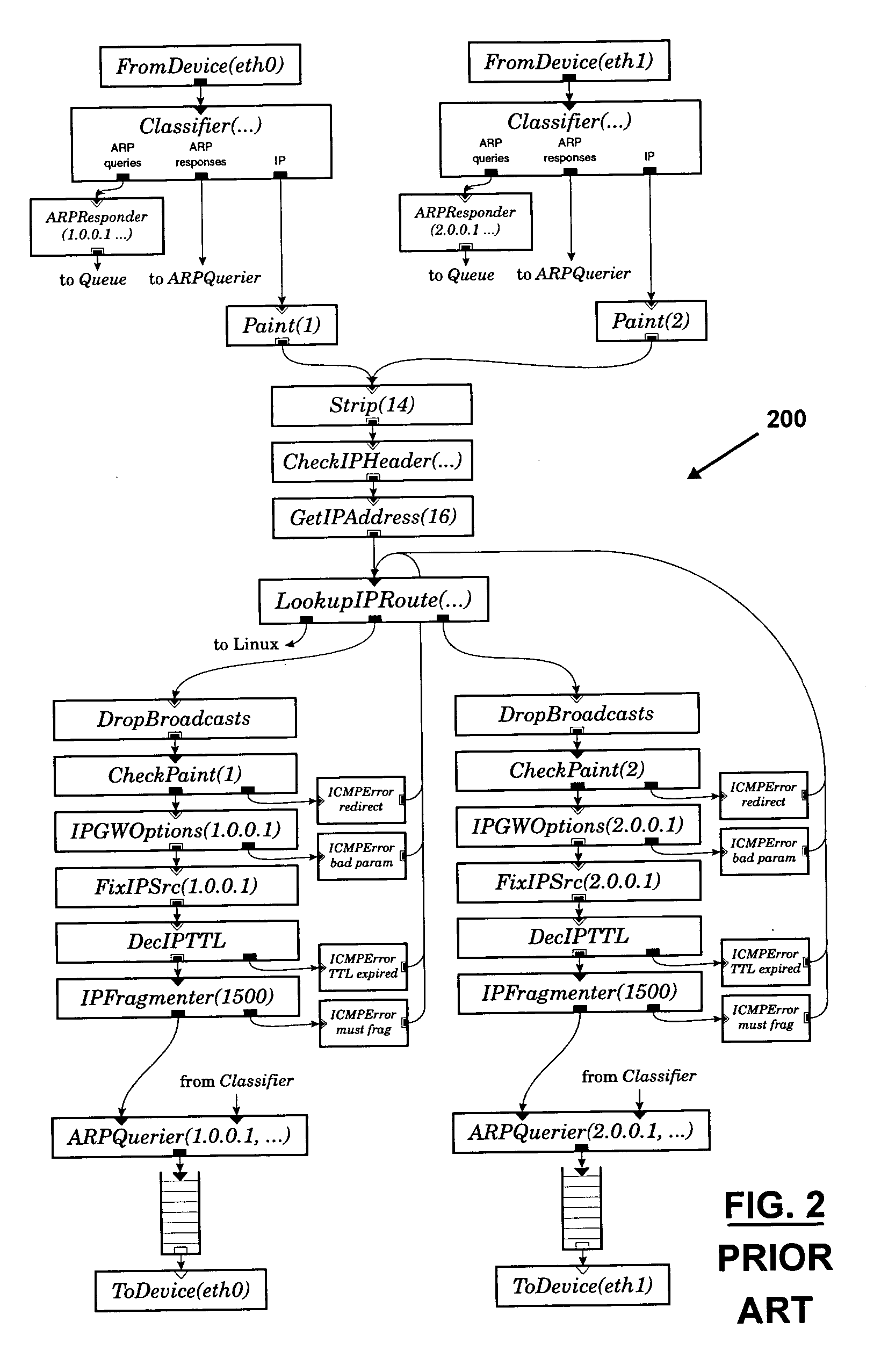Software configurable cluster-based router using stock personal computers as cluster nodes
a cluster-based router and personal computer technology, applied in data switching networks, frequency-division multiplexes, instruments, etc., can solve the problems of reducing the cost of personal computer equipment, rethinking the implementation of computer-host-type routers, and incurring router development costs, so as to reduce transport overhead, reduce the effect of transport overhead and high routing capacity
- Summary
- Abstract
- Description
- Claims
- Application Information
AI Technical Summary
Benefits of technology
Problems solved by technology
Method used
Image
Examples
Embodiment Construction
[0048] In accordance with an exemplary embodiment of the invention, FIG. 4 shows an exemplary cluster-based router implementation 400 which includes a 3×4×3 arrangement (cluster) of PC router cluster nodes 402 interconnected in accordance with a toroidal topology. The invention is not limited to the number of PCs or to the topology shown. An arbitrary number of router cluster nodes 402 (typically a large number) may be interconnected in accordance with various topologies without limiting the invention. The choice of the number of router cluster nodes 402 is chosen to obtain a required routing capacity, while the chosen topology employed is a balance between advantages and disadvantages including, but not limited to: cost, complexity, delay, blocking probability, etc. which may be dependent on the routing capacity.
[0049] In accordance with the exemplary embodiment shown, the individual router cluster nodes 402 are arranged in x, y, and z slices, and each router cluster node 402 is p...
PUM
 Login to View More
Login to View More Abstract
Description
Claims
Application Information
 Login to View More
Login to View More - R&D
- Intellectual Property
- Life Sciences
- Materials
- Tech Scout
- Unparalleled Data Quality
- Higher Quality Content
- 60% Fewer Hallucinations
Browse by: Latest US Patents, China's latest patents, Technical Efficacy Thesaurus, Application Domain, Technology Topic, Popular Technical Reports.
© 2025 PatSnap. All rights reserved.Legal|Privacy policy|Modern Slavery Act Transparency Statement|Sitemap|About US| Contact US: help@patsnap.com



